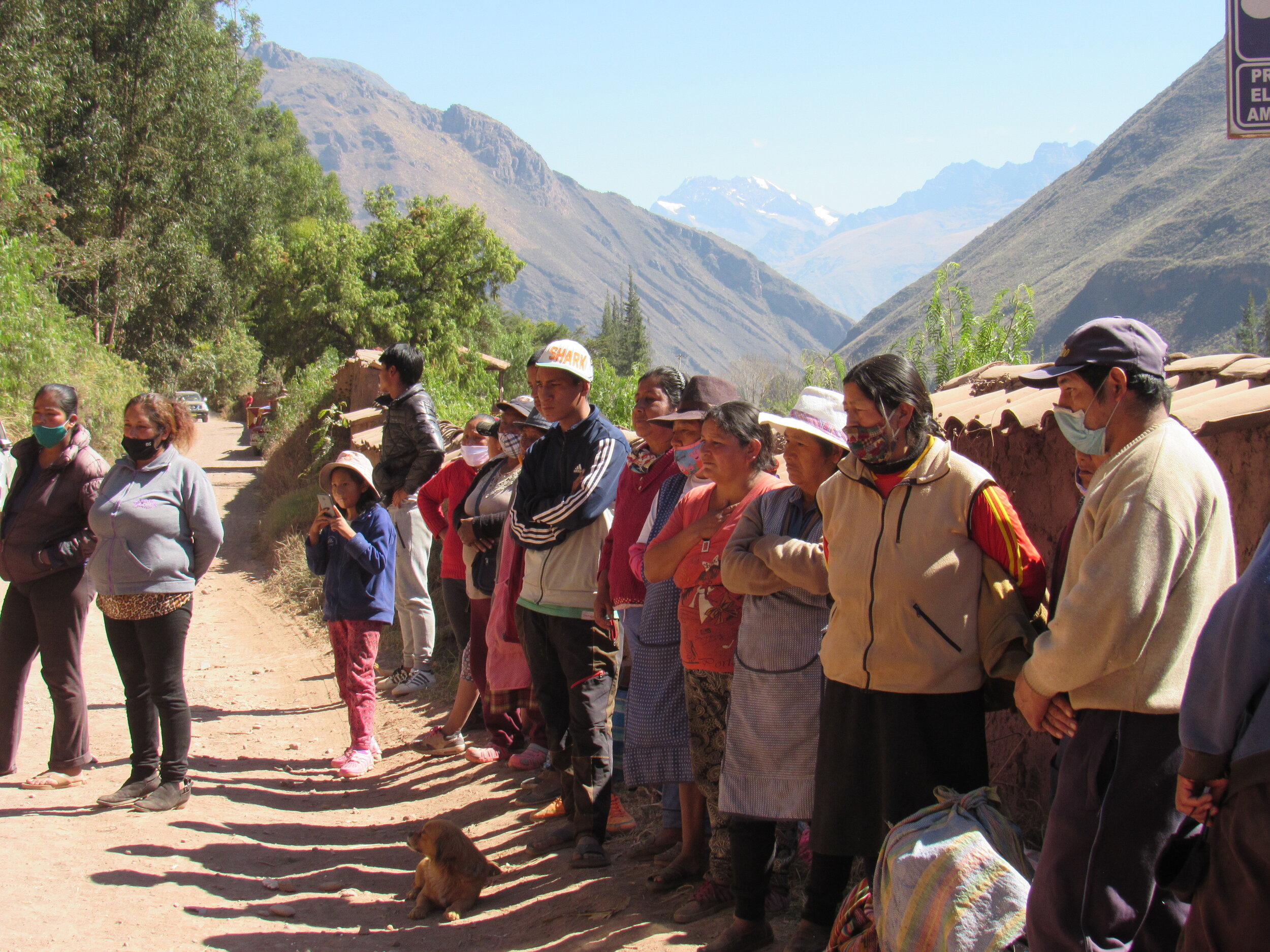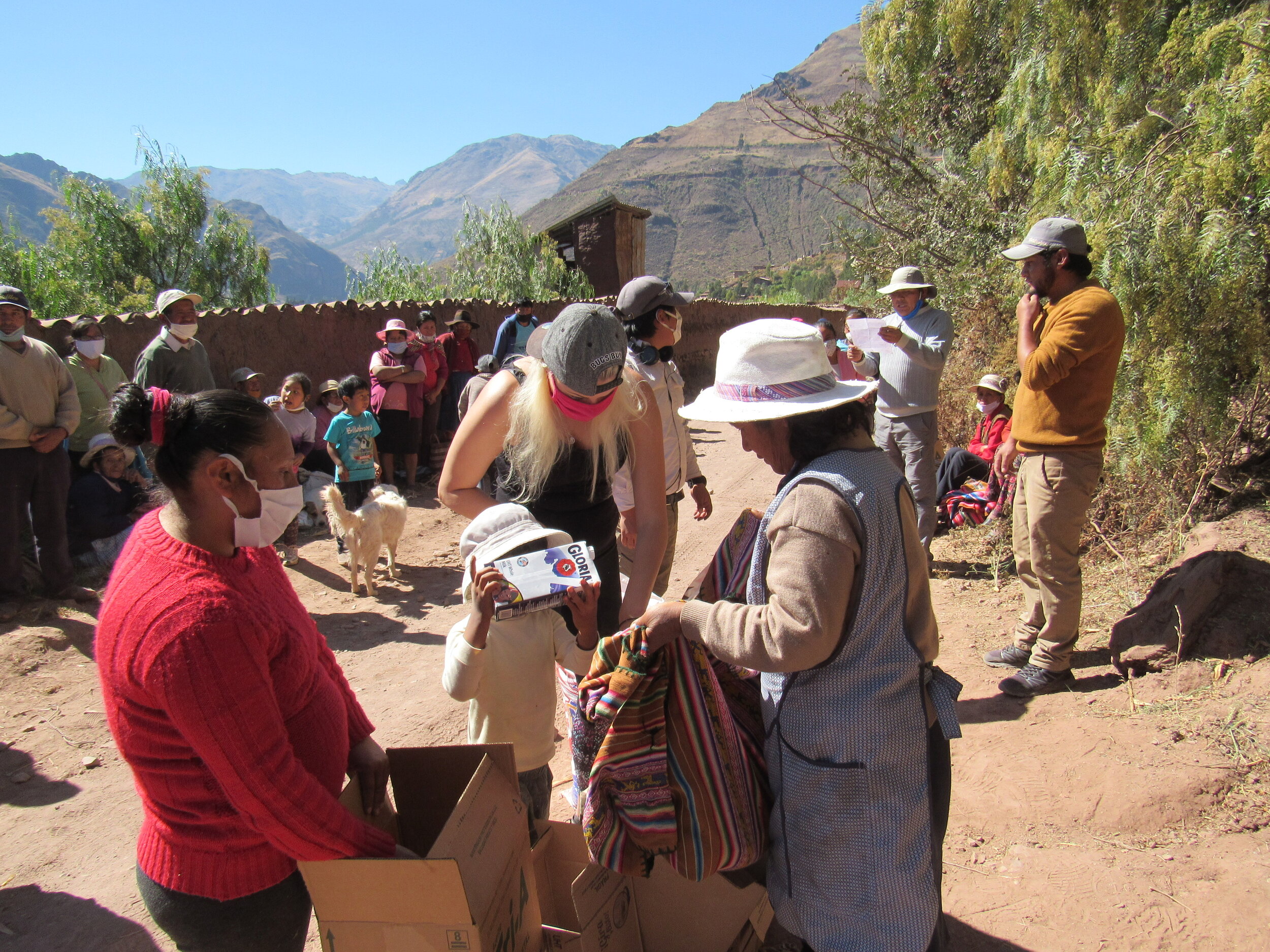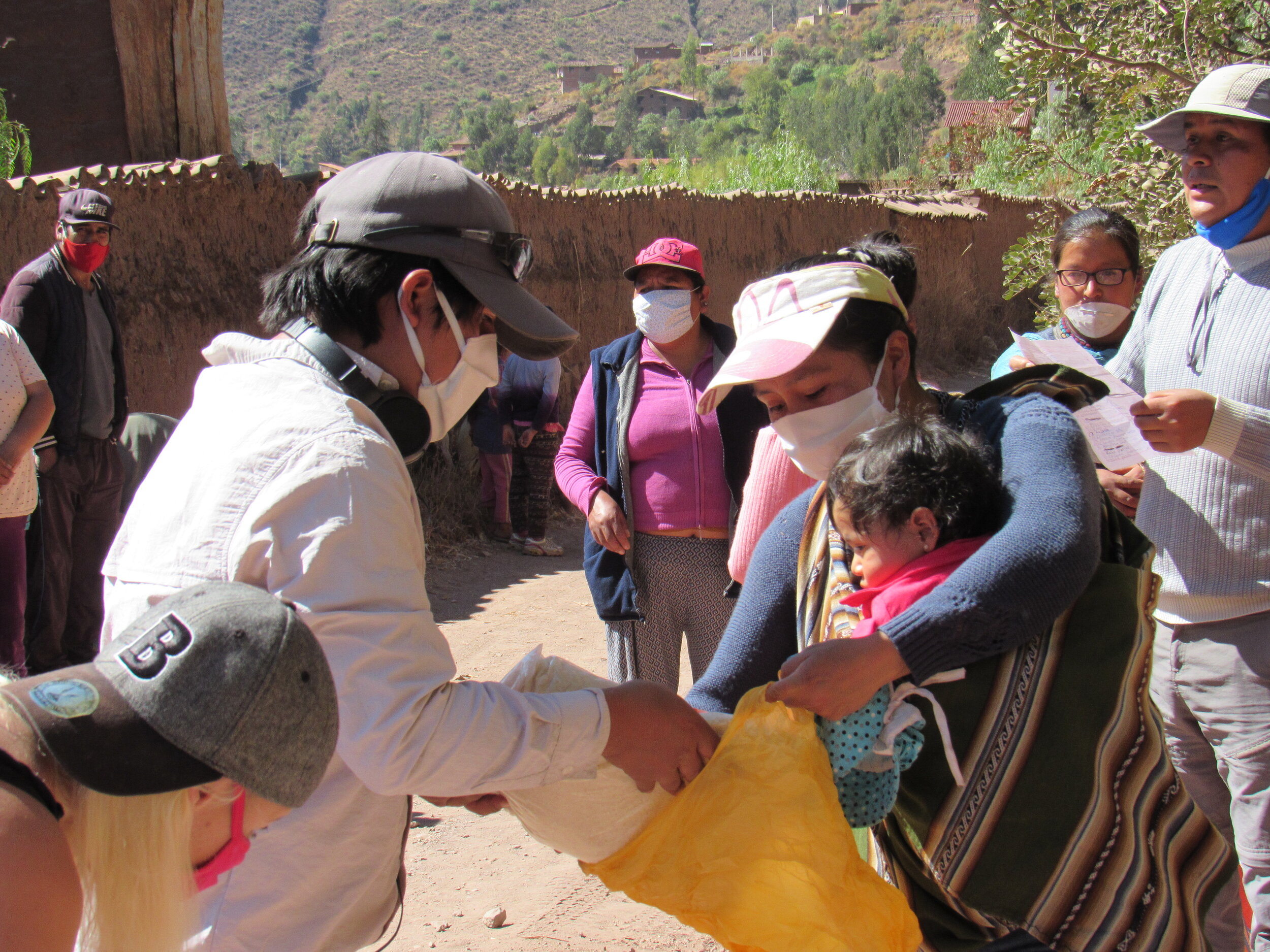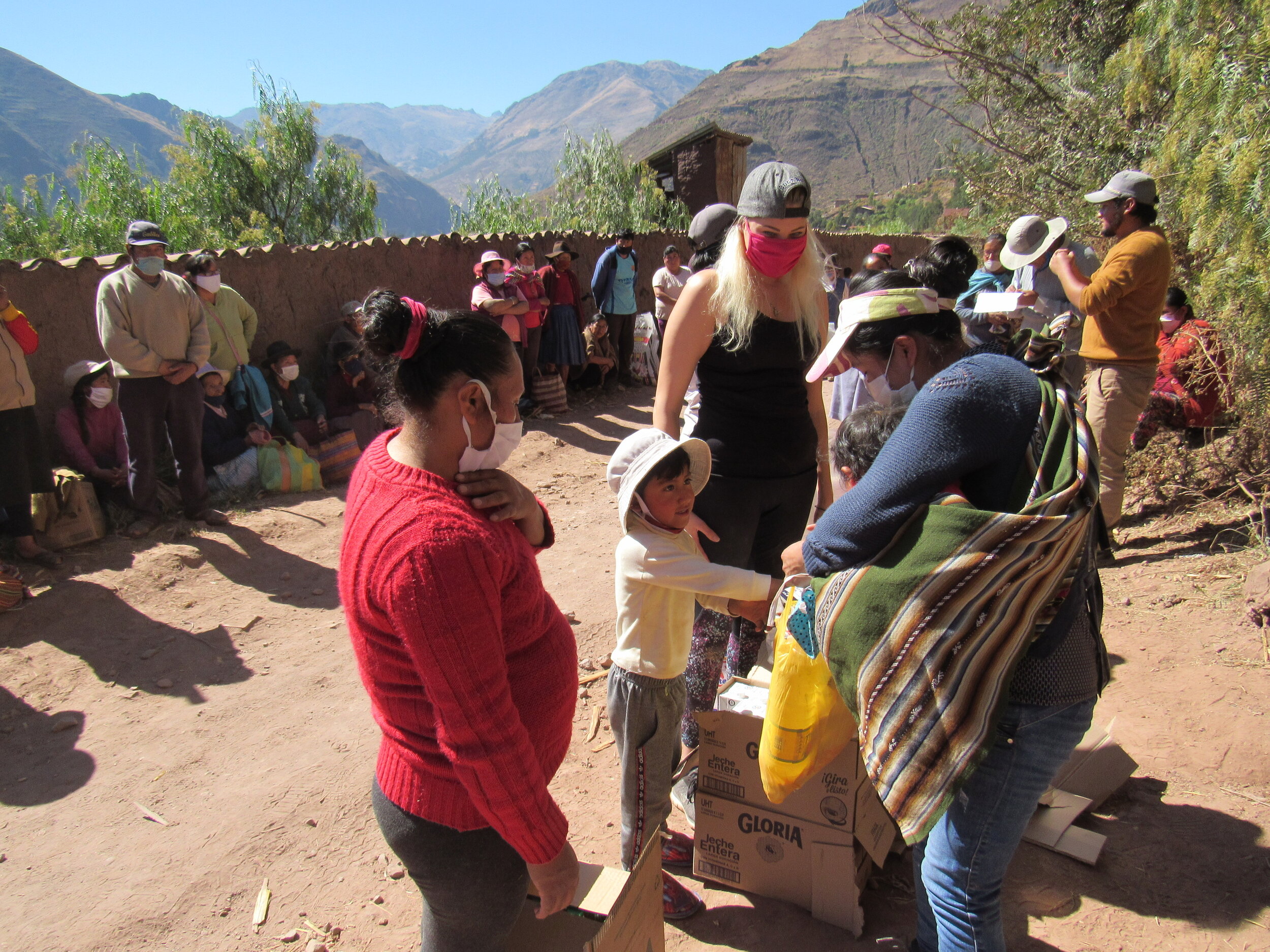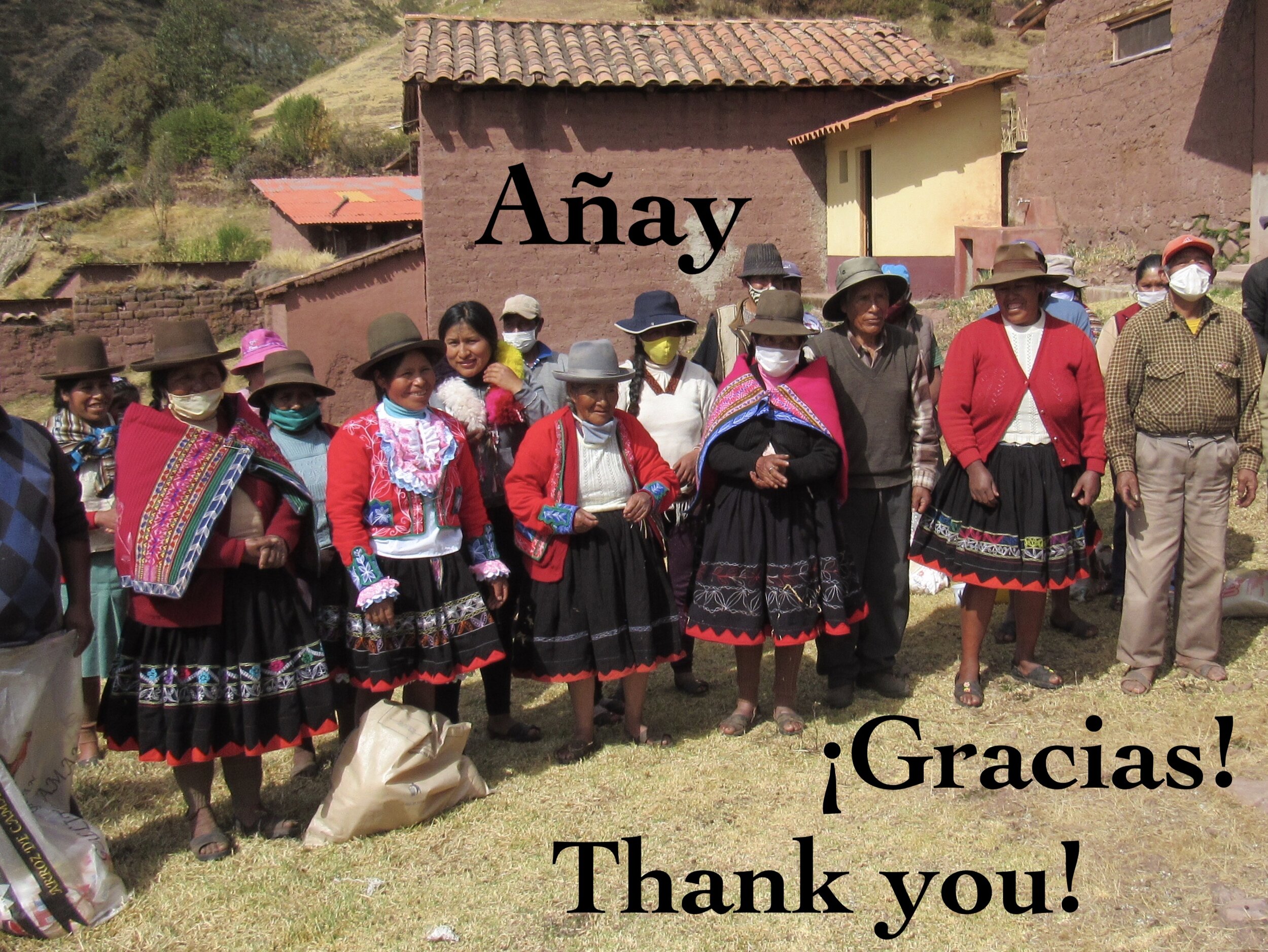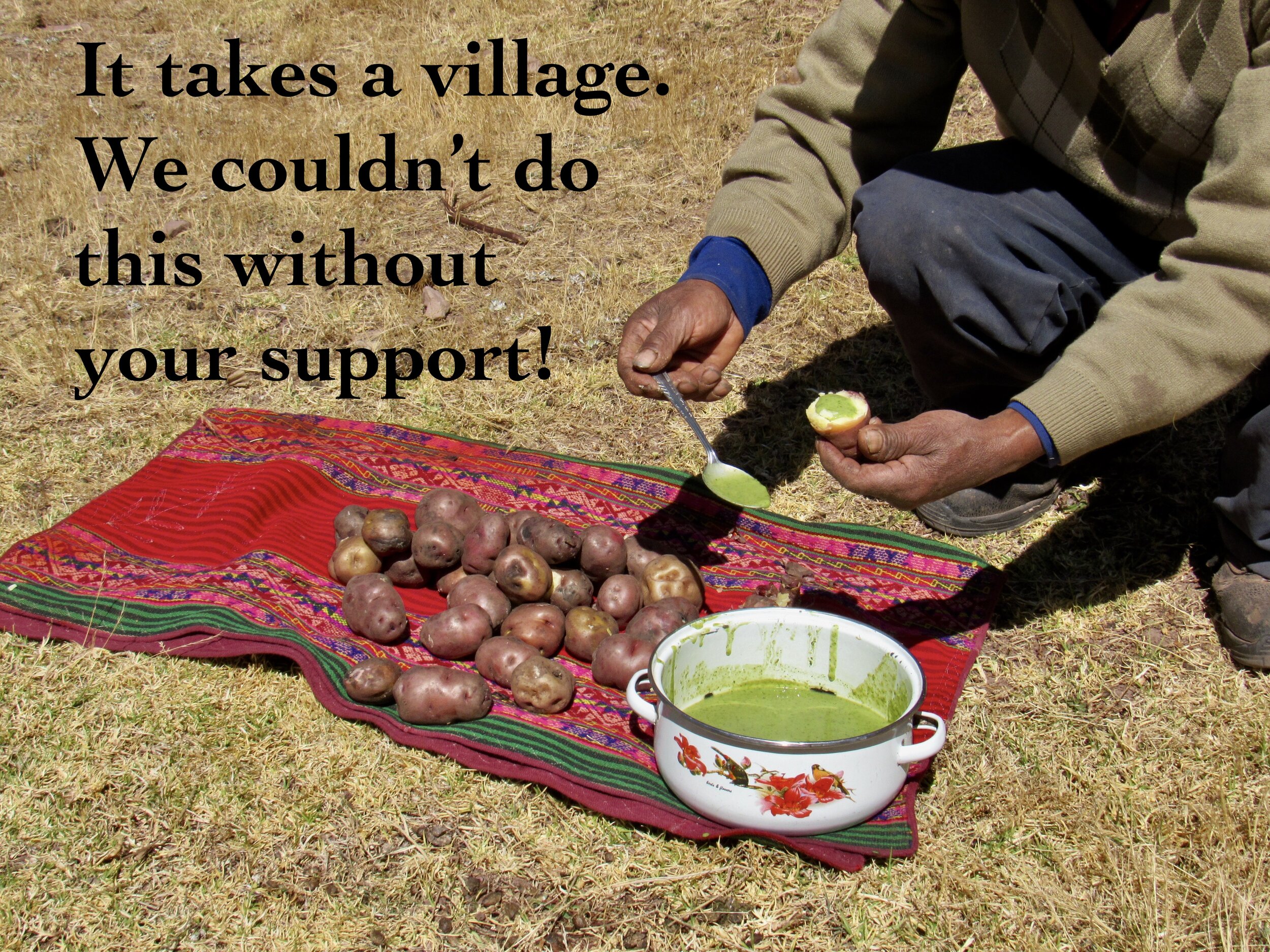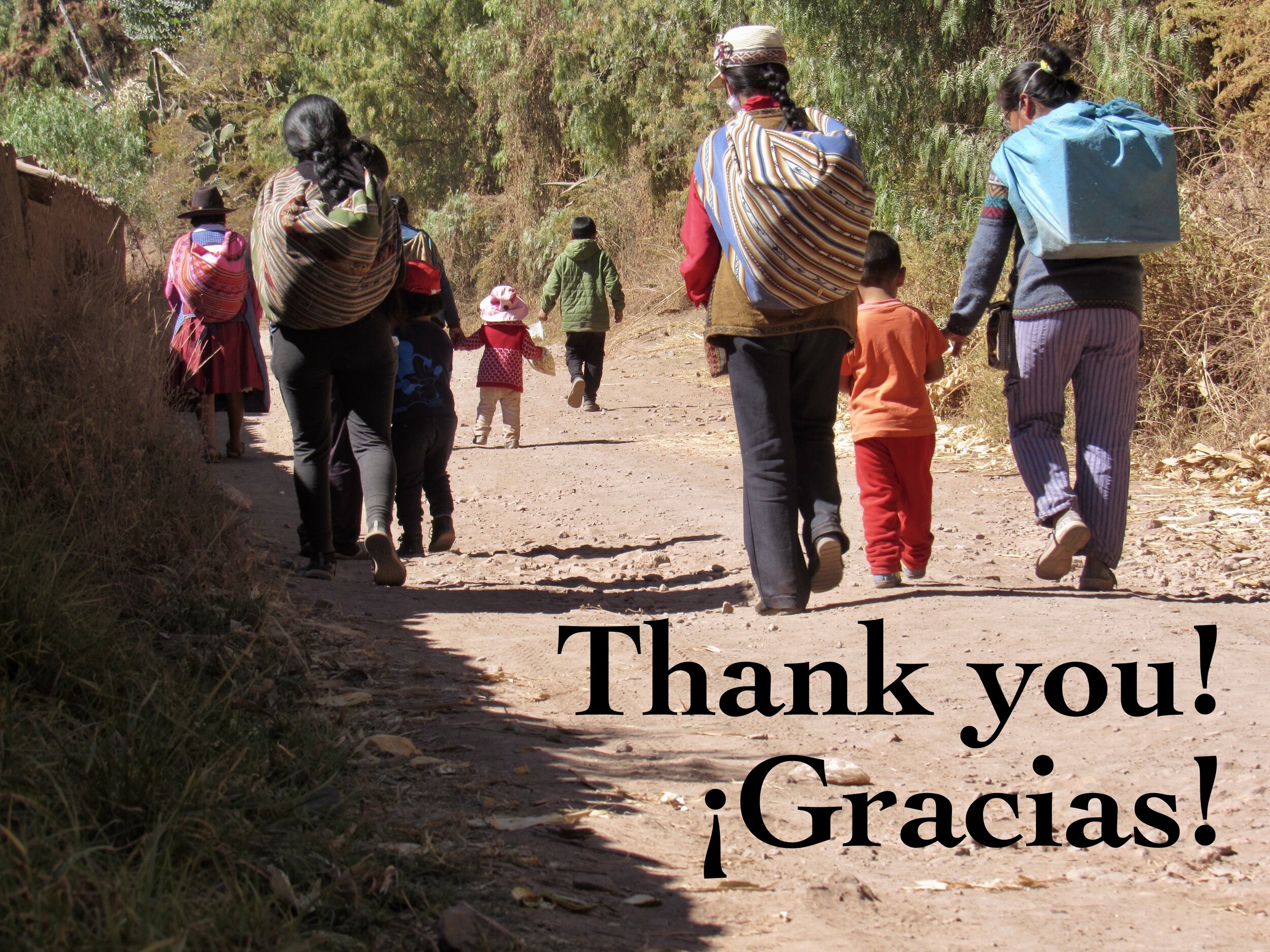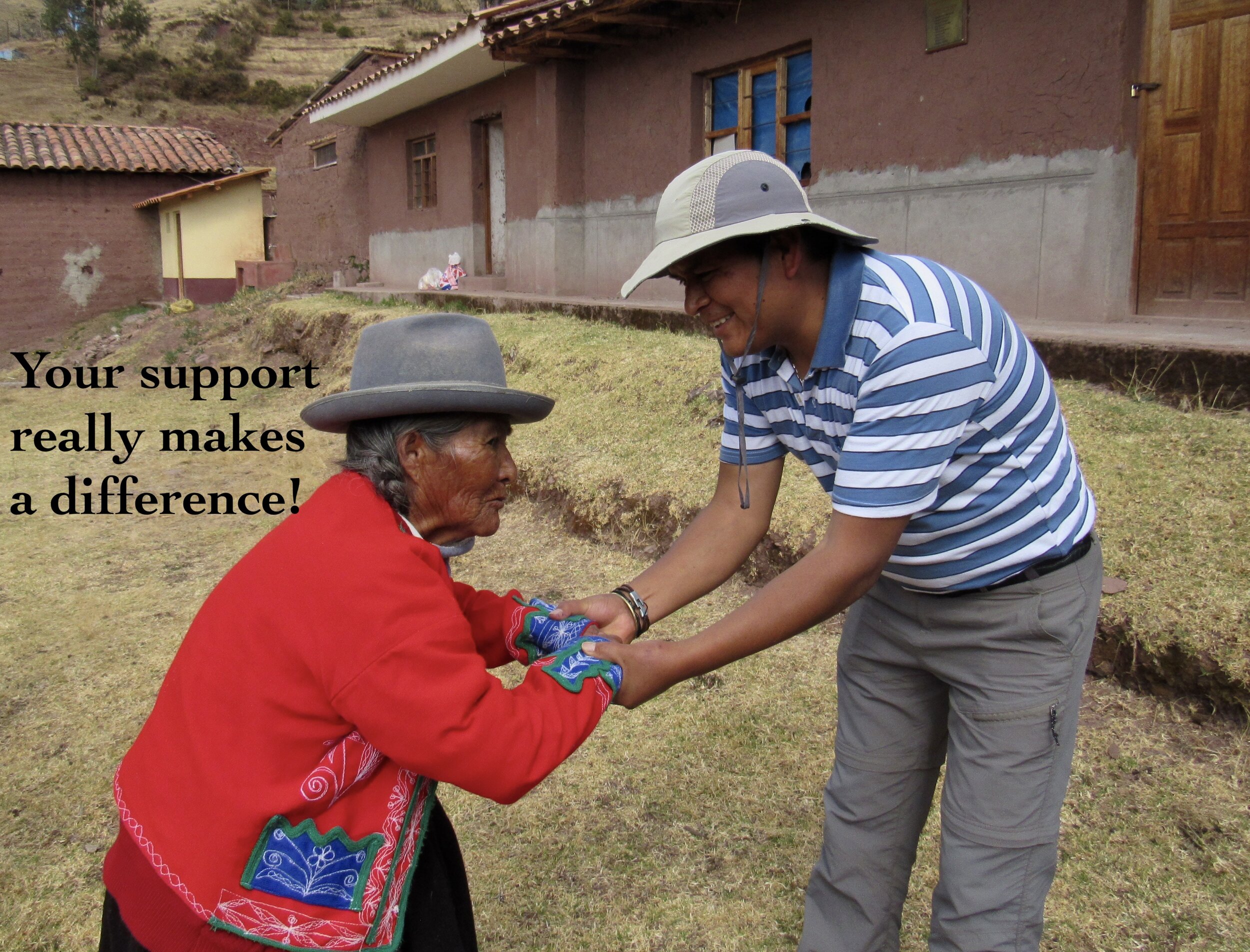Comunidad Campesina Taray-Picol
Working our way along the Sacred Valley, the fourth mayor we contacted was in Pisac, who informed us that the two communities that need help the most are Taray and Picol. Taray is very close to Pisac and many families there worked with tourists, before the pandemic. Picol is farther from Pisac, but the mayor said that this was the poorest community in the Pisac district and that they really need help.
Just like the mayors of Yaurisque, Urubamba and Ollantaytambo, the mayor of Pisac sent a vehicle to Cusco Saturday morning to pick up the food and us. Every time, the transportation provided is different, but we don’t complain because the most important thing for us is that the mayor’s office cover the cost. That way we can spend 100% of donations on food.
Also like the last couple times, we bought the food at Wagner’s, where the owner Jorge has been very generous in our negotiations for what we can get for the amount of donations that we have. This time, we were working with a budget of s/30 Peruvian Soles (PEN) per family, which is about $8.60 USD. We paid s/14 for 5 kilos of rice, s/5.36 for a liter of vegetable oil for cooking, s/3 for a carton of UHT milk and with the remaining s/7.64 Jorge gave us nine small bags of oatmeal. These are usually at least s/1 each, so I was happy that he went up to nine, when he could have easily given us seven.
Today was the first time that Kerry Willoughby joined us and the other volunteers taking people food for the Covid Relief Project. Henry and Auqui, who have been working with me on the project for a couple months now were also there. It was a much bigger group than the previous three times, which was really fun. The more the merrier!
Kerry, Henry, Auqui & I met at Wagner’s in the morning, helped load everything into the van that was sent by the mayor of Pisac and hit the road. We drove to the main square of Taray, where we picked up Edy Pumamarca Dueñas, the community leader for Taray who had made us a list of 60 families in need. Then we drove to a road bordering the fields, where the families were waiting for us. It was a hot and dusty spot, but the people were so grateful that it was more than worth it.
After we had distributed the food to all of the families on the list, plus a few extra, one of the community members brought us a variety of white corn with giant kernels corn, called paraqay. The giant white kernels that are taken from the cob then boiled to make mote. Edy then invited us to his home where his mother served us an early lunch of boiled potatoes and cooked carrots before we left for the second village.
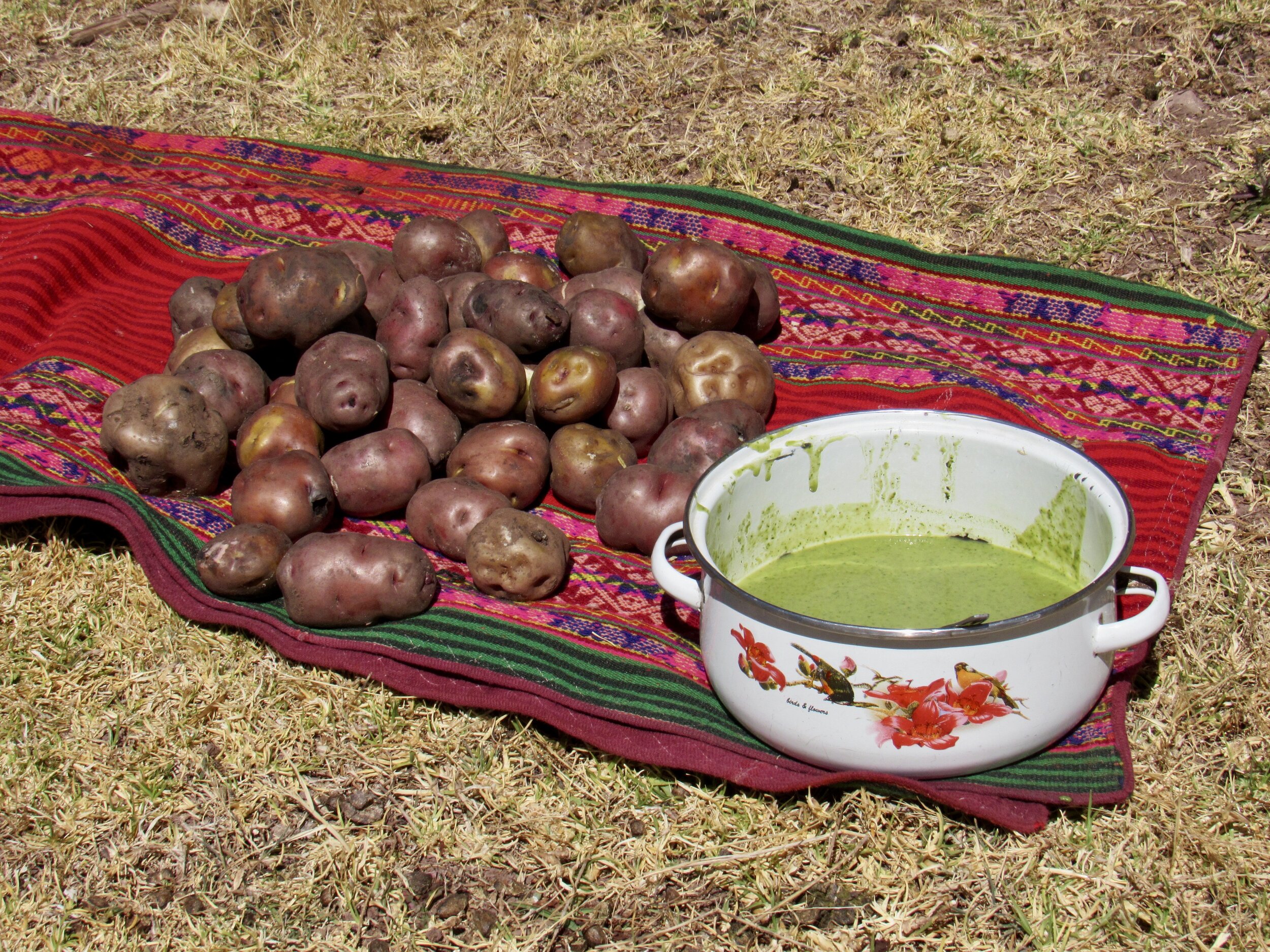
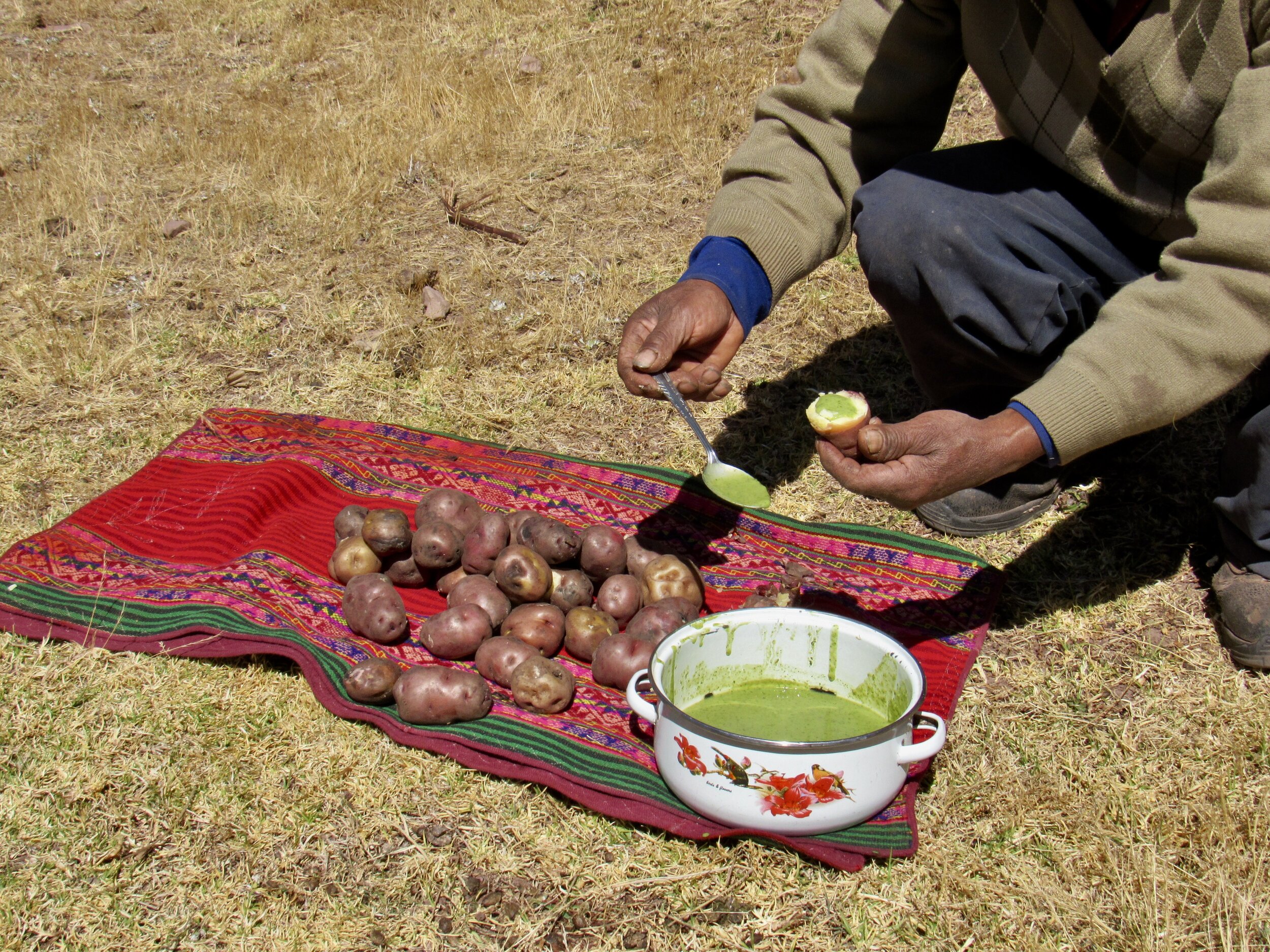
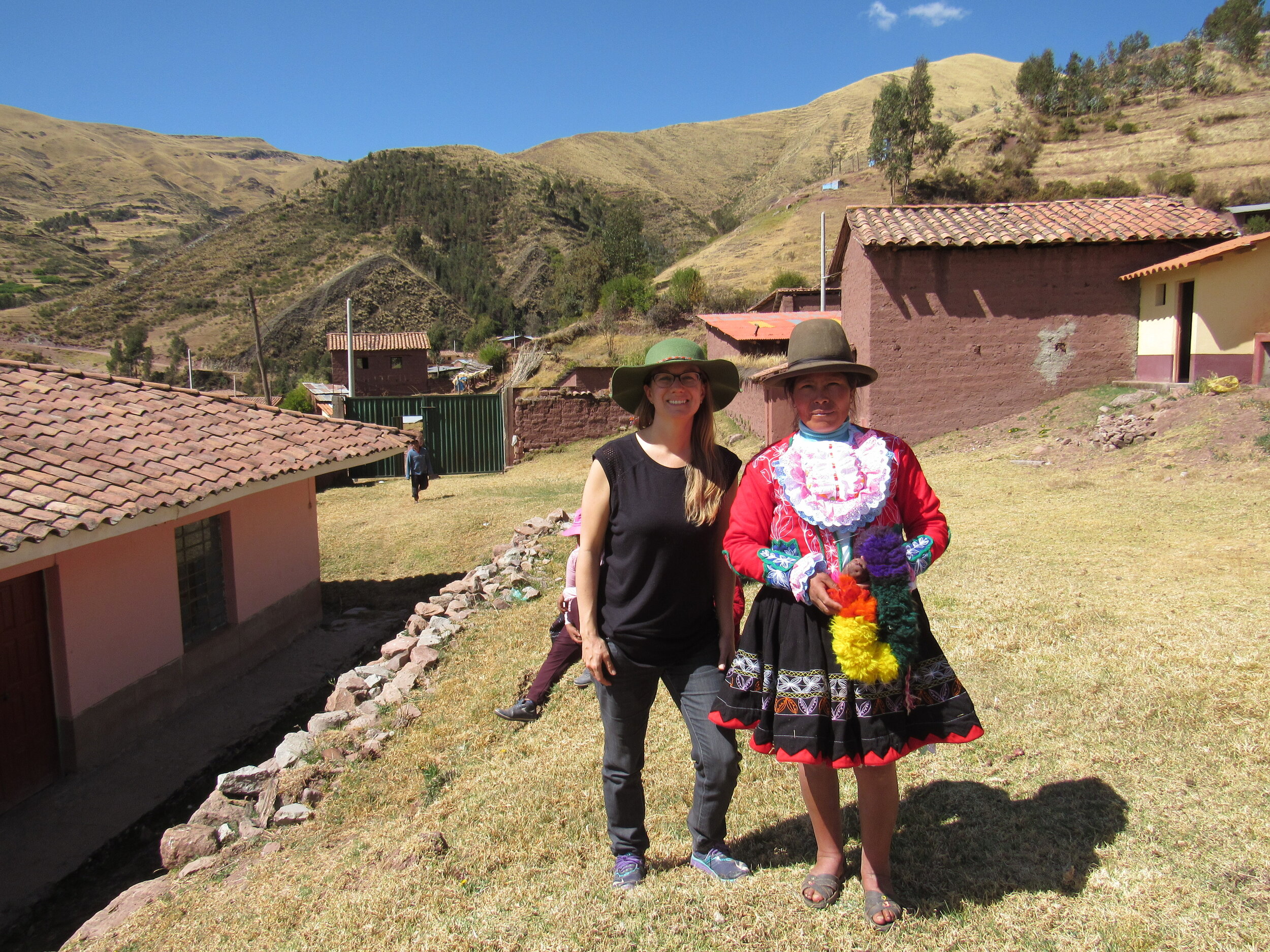
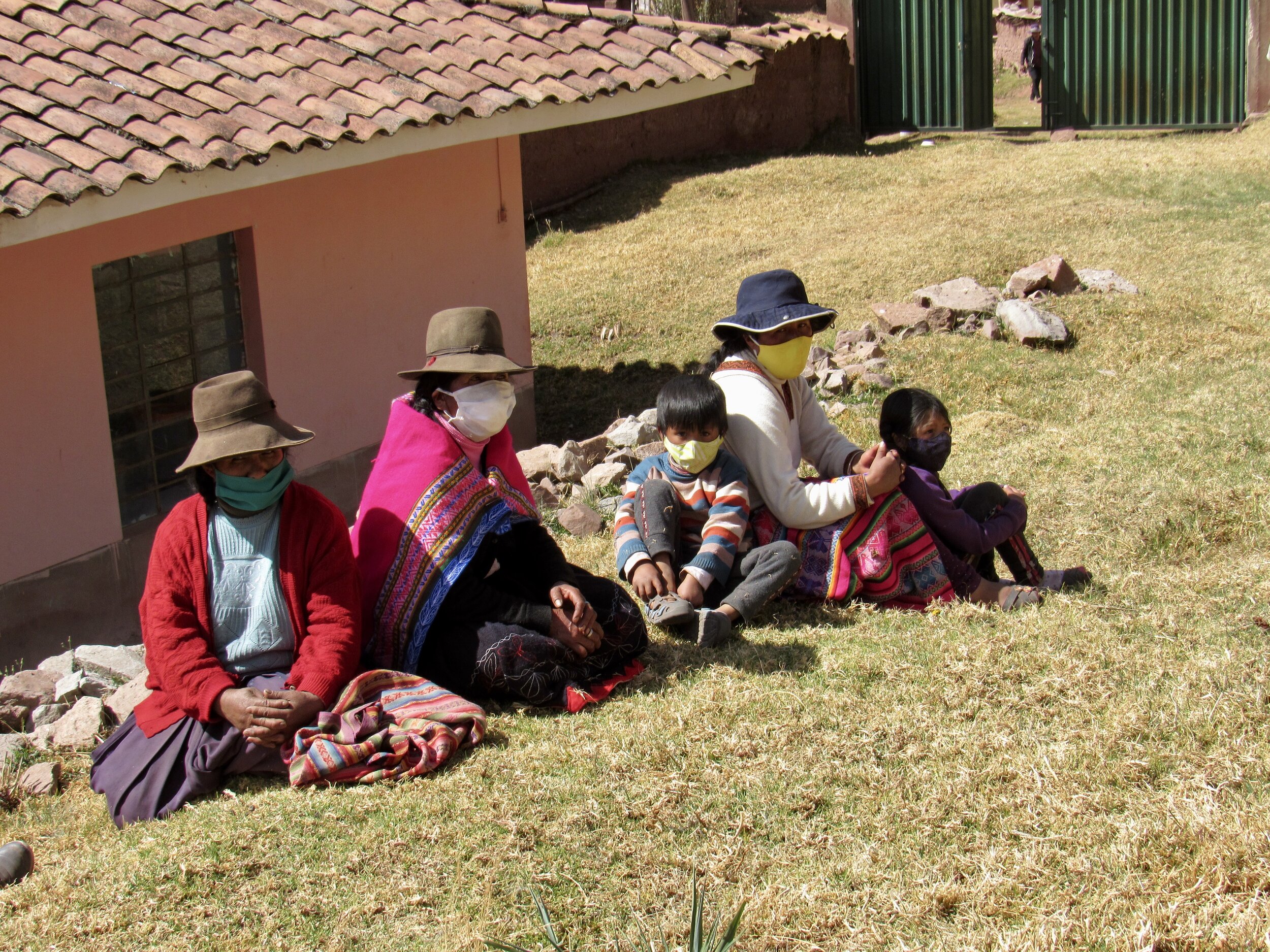
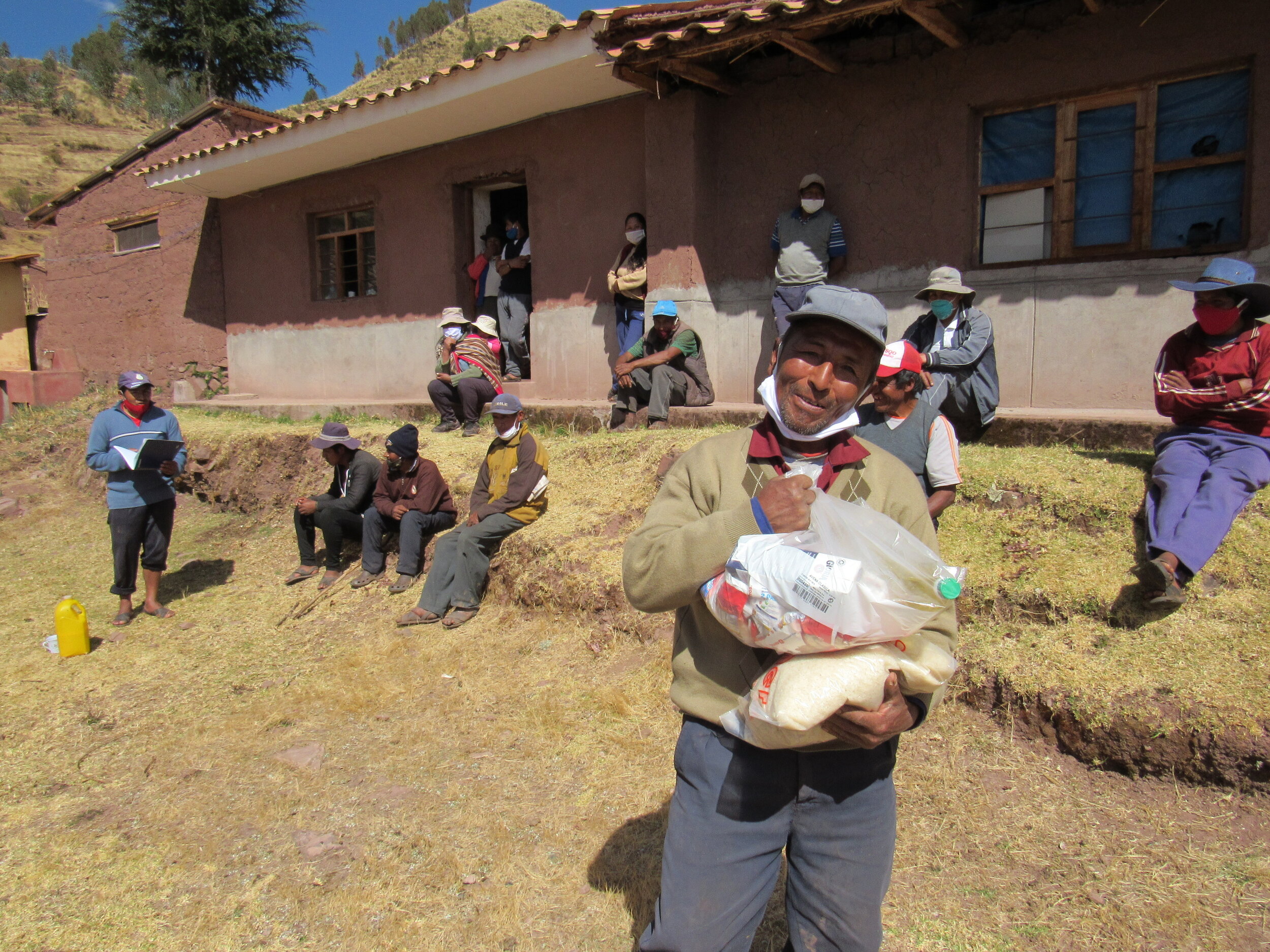

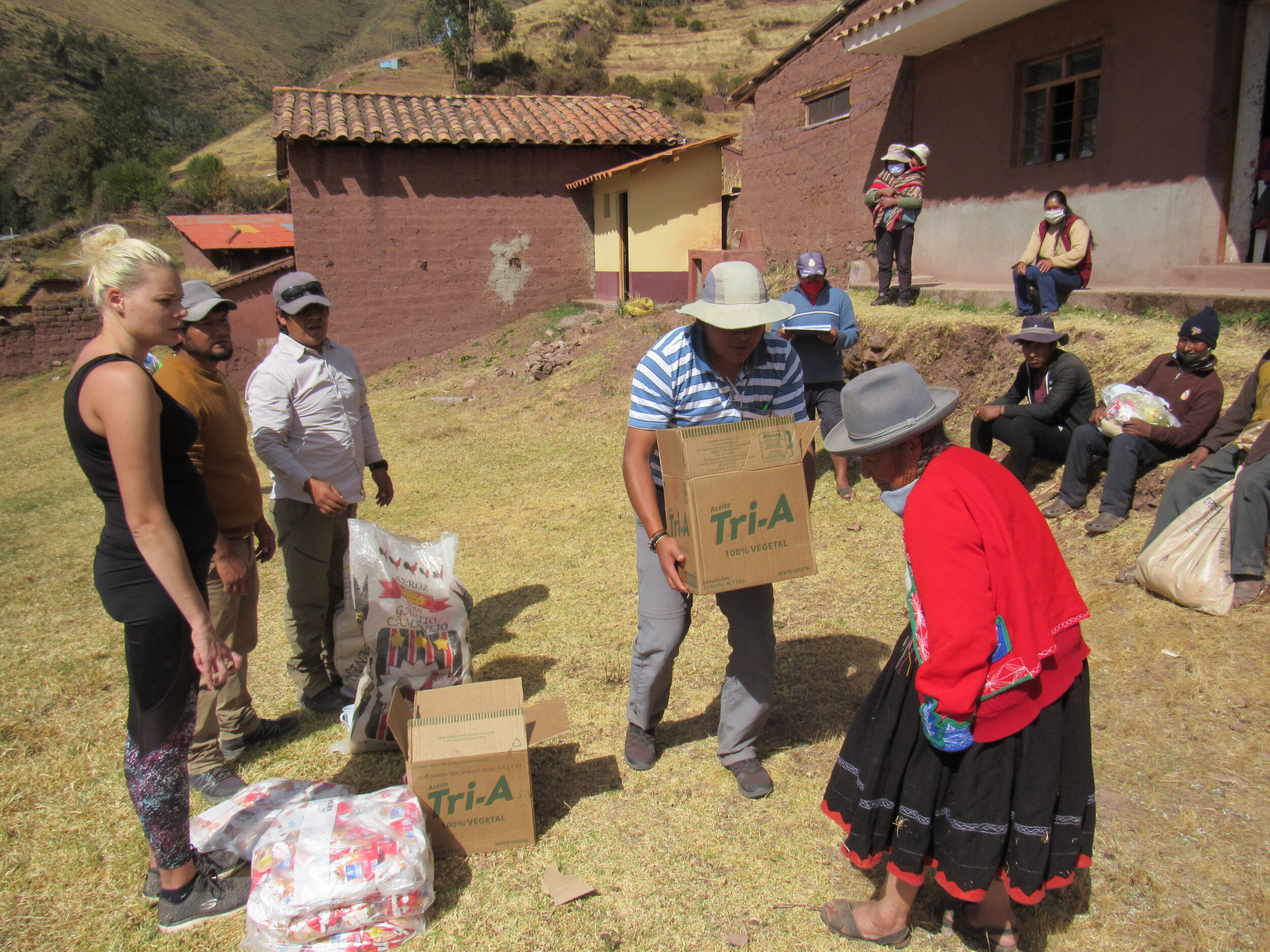
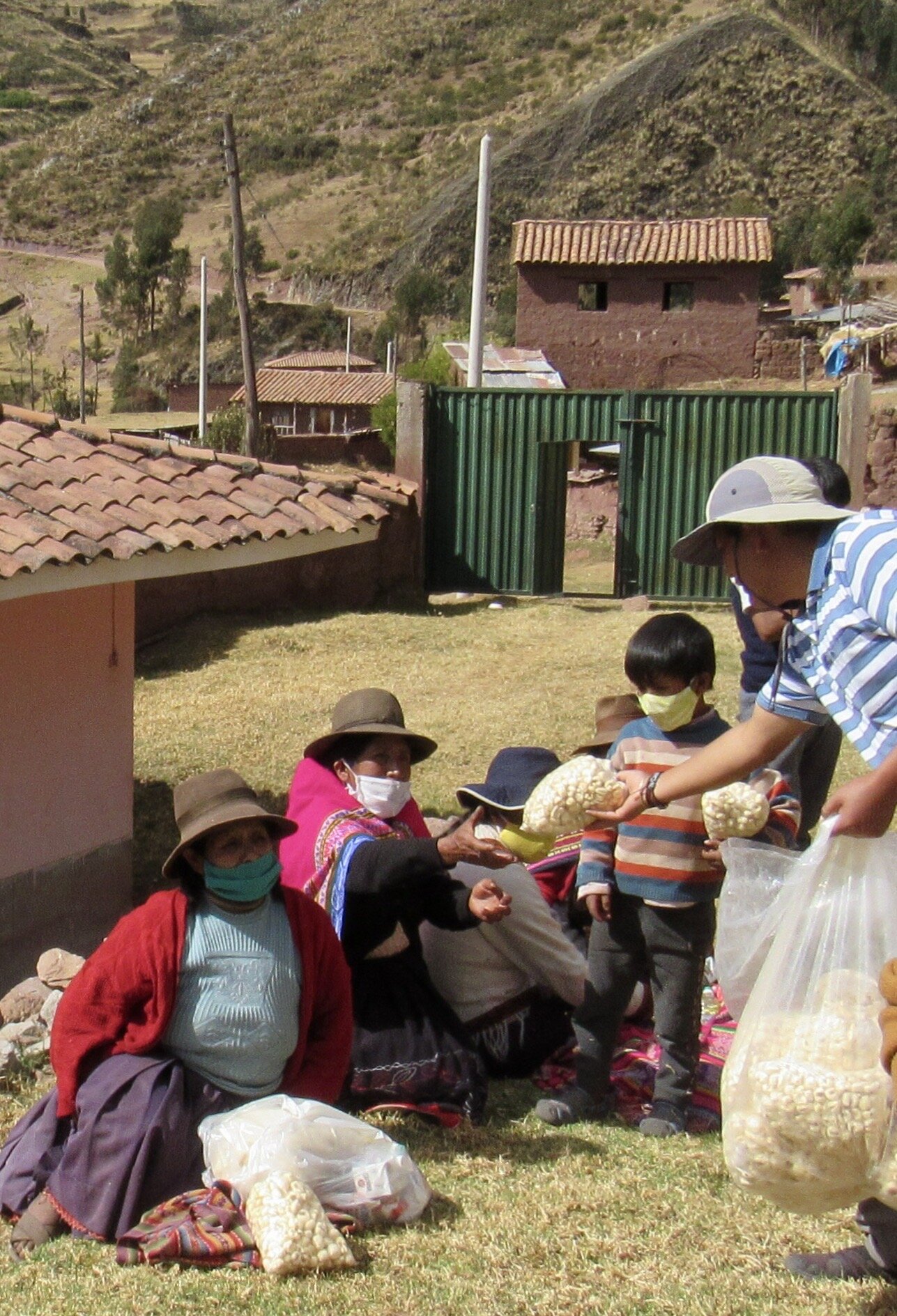
Picol is almost an hour drive from Pisac, up another very dusty road. At the entrance to the village there was a chain across the road, padlocked to a post. We waited for somebody to come let us in and used the handwashing station that they had placed next to the checkpoint. This is another one of those isolated communities that has no cases of Covid in the area and who are doing a good job of staying isolated enough to keep it that way.
We met with the gathered villagers and they brought us boiled potatoes and a spicy green chile sauce to share before we began the distribution. Despite all of the corn and potatoes that I had already eaten that morning, it wasn’t hard to eat a few more. They really are that good.
In Picol most of the assembled villagers were elderly. I was a little worried about them, since the pandemic has been so much more deadly for the elderly. In Taray, most of the people who came to receive their family’s food were in their 20s or 30s. Here, it appeared that all of the younger people were working in the fields.
Before we left, the people still came to give us more hugs than I expected - or than were probably safe. Despite being positive that none of us were sick, it was still a little unnerving to see elderly people from an isolated community come to hug a person from Cusco. Like T’astayoc and Perolniyoc two weeks ago, Picol does not have any access to a hospital, clinic or pharmacy. The community has a primary school, but no other services. If the virus did start to spread through their village, it would be devastating.
Still, I believe that we are doing more good than harm and that we have all been very careful to follow all Covid hygiene protocols. I know that tourists won’t be coming back anytime soon and we will likely be needed throughout 2020, if not partly into 2021. I want to keep taking food to people and hope that we can continue to do it in a way that keeps these isolated mountain villages free from the virus.

